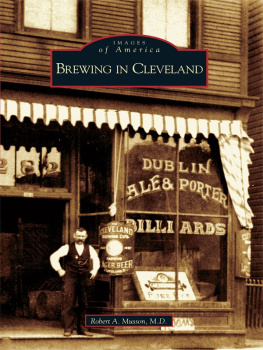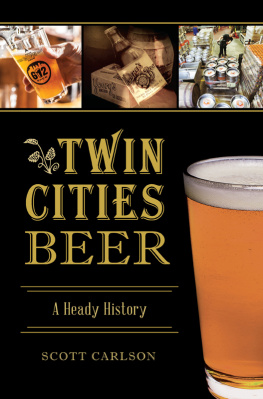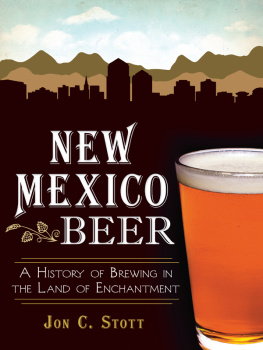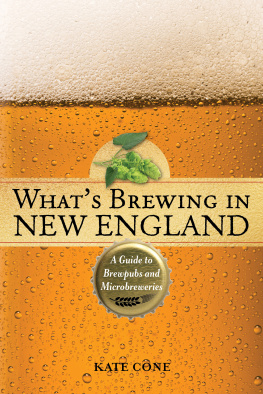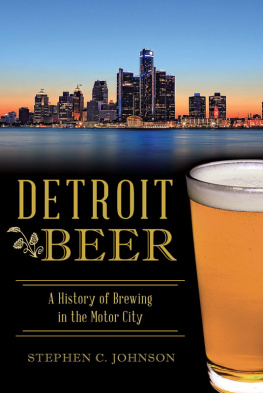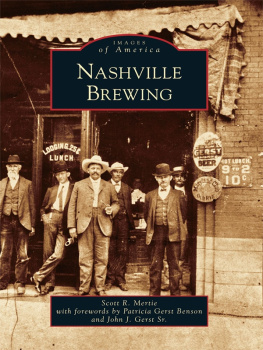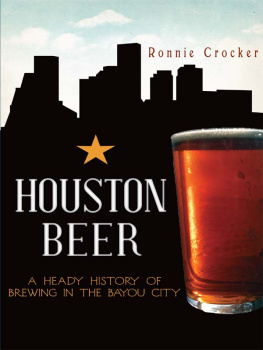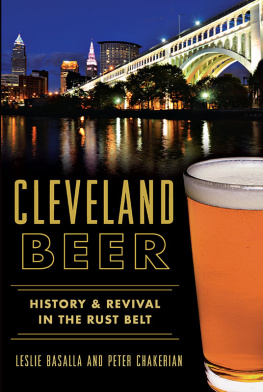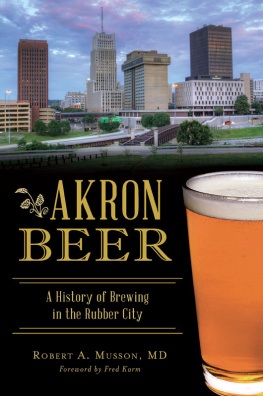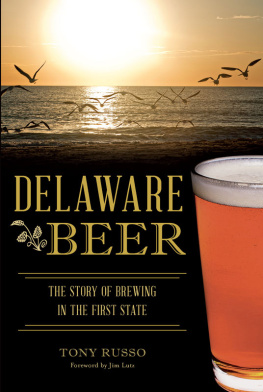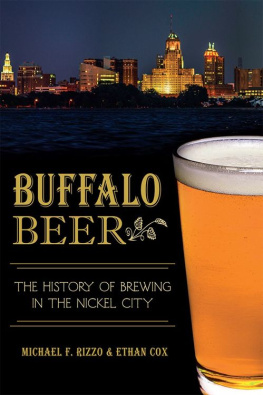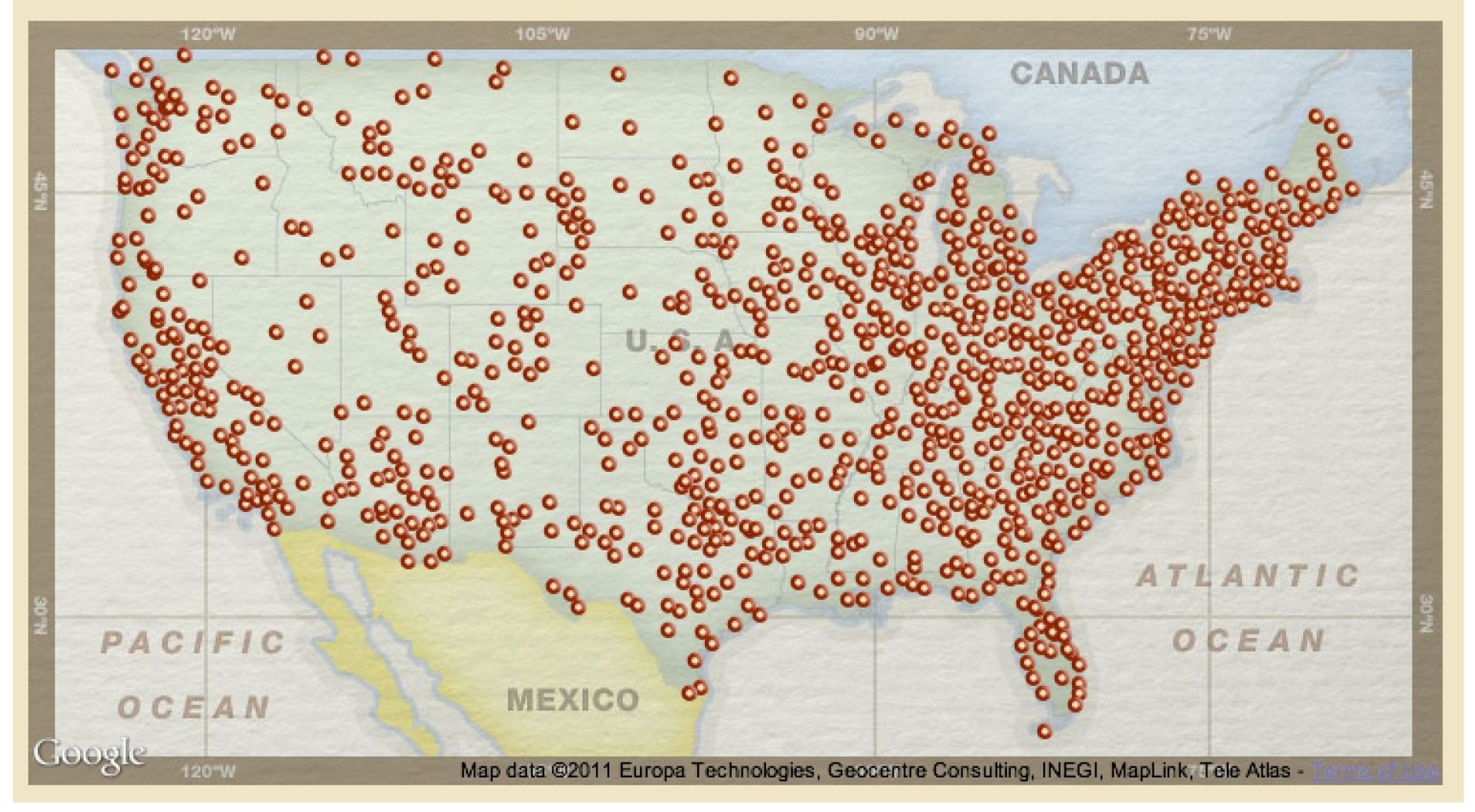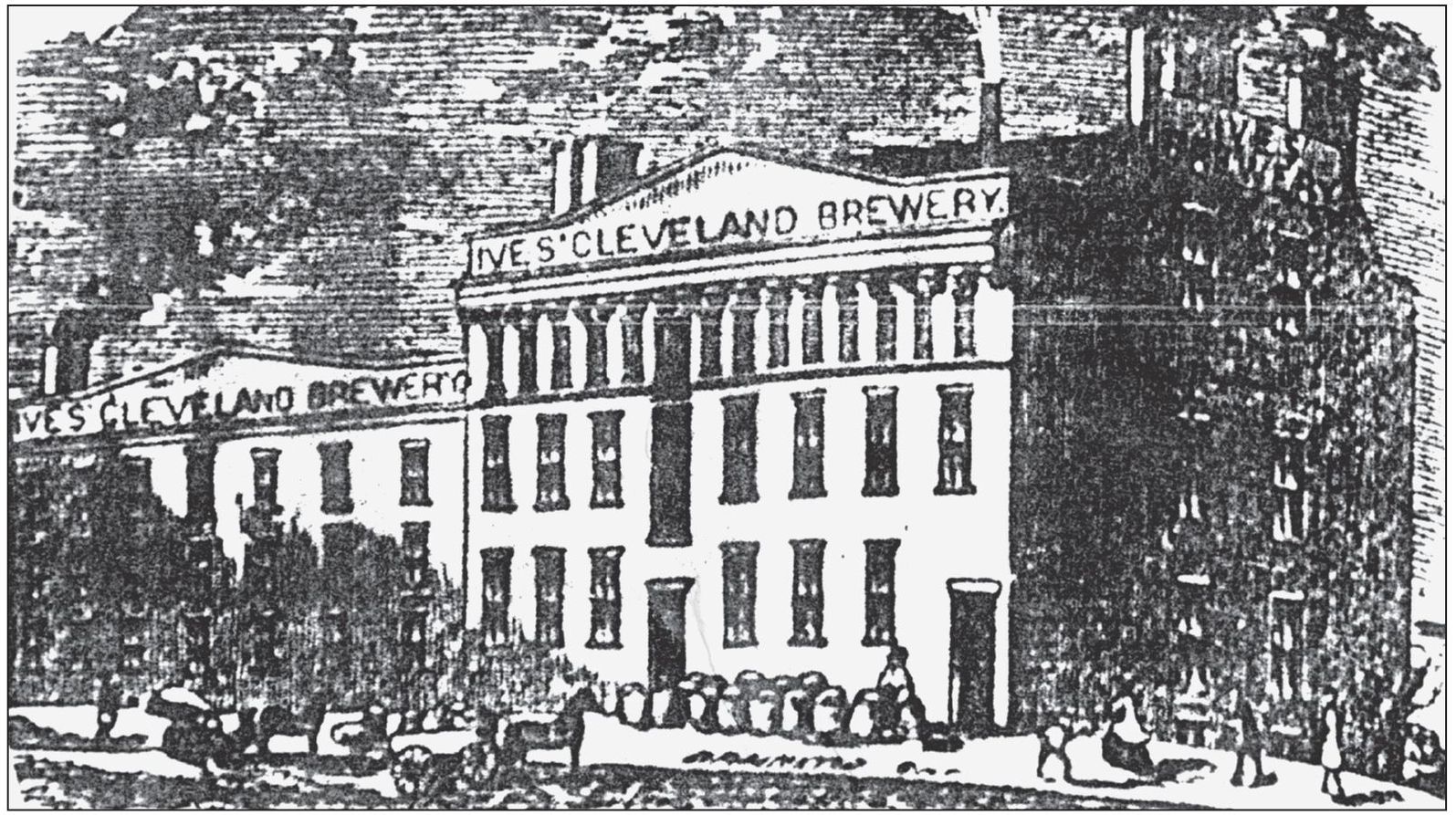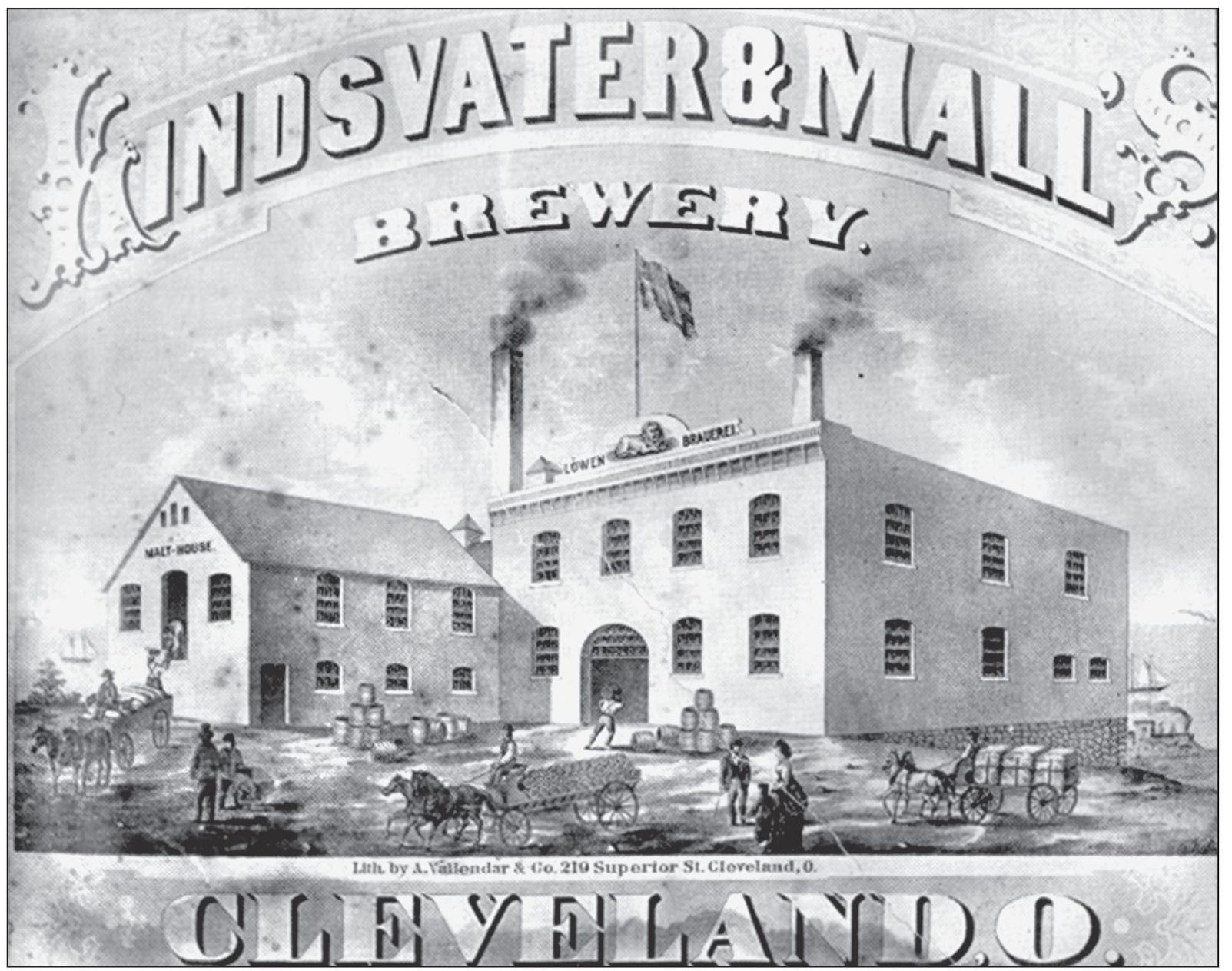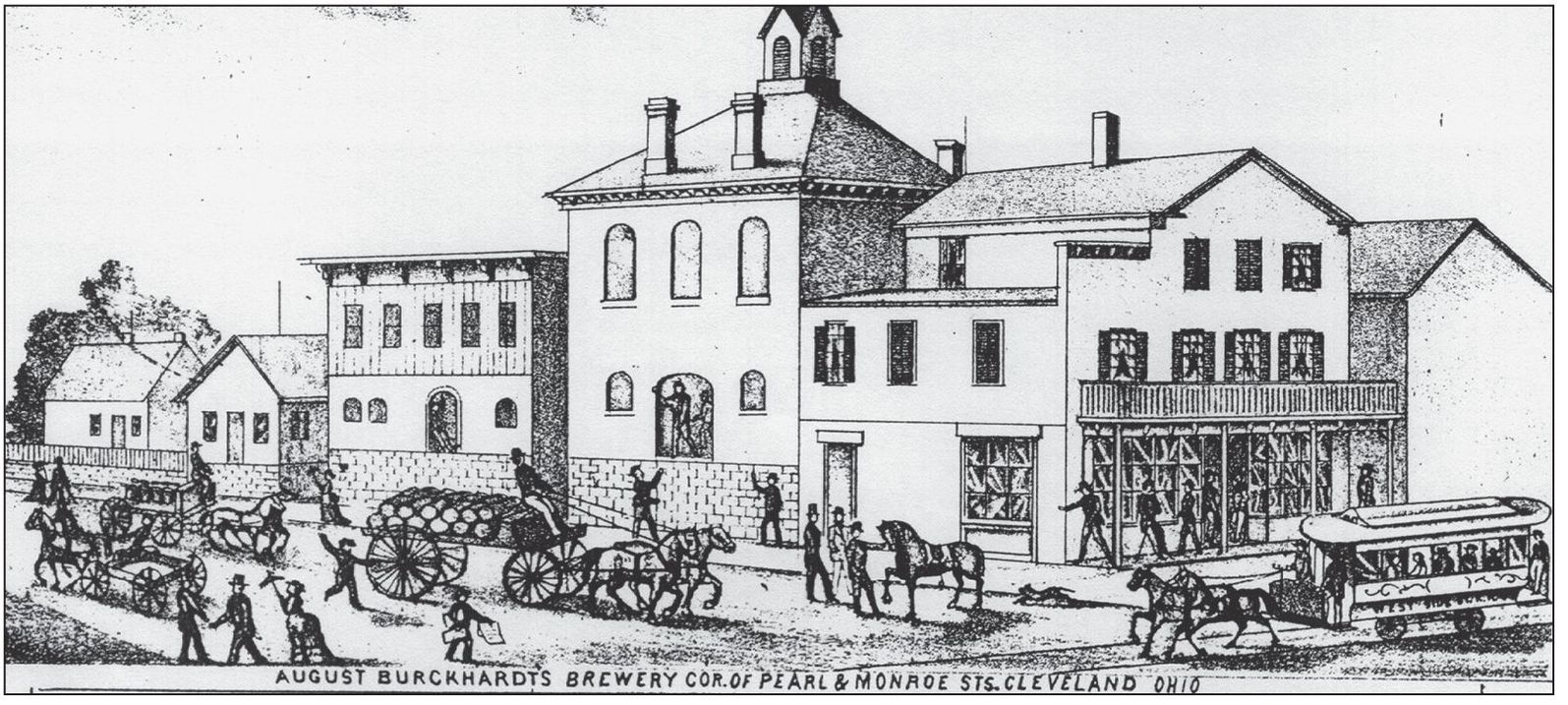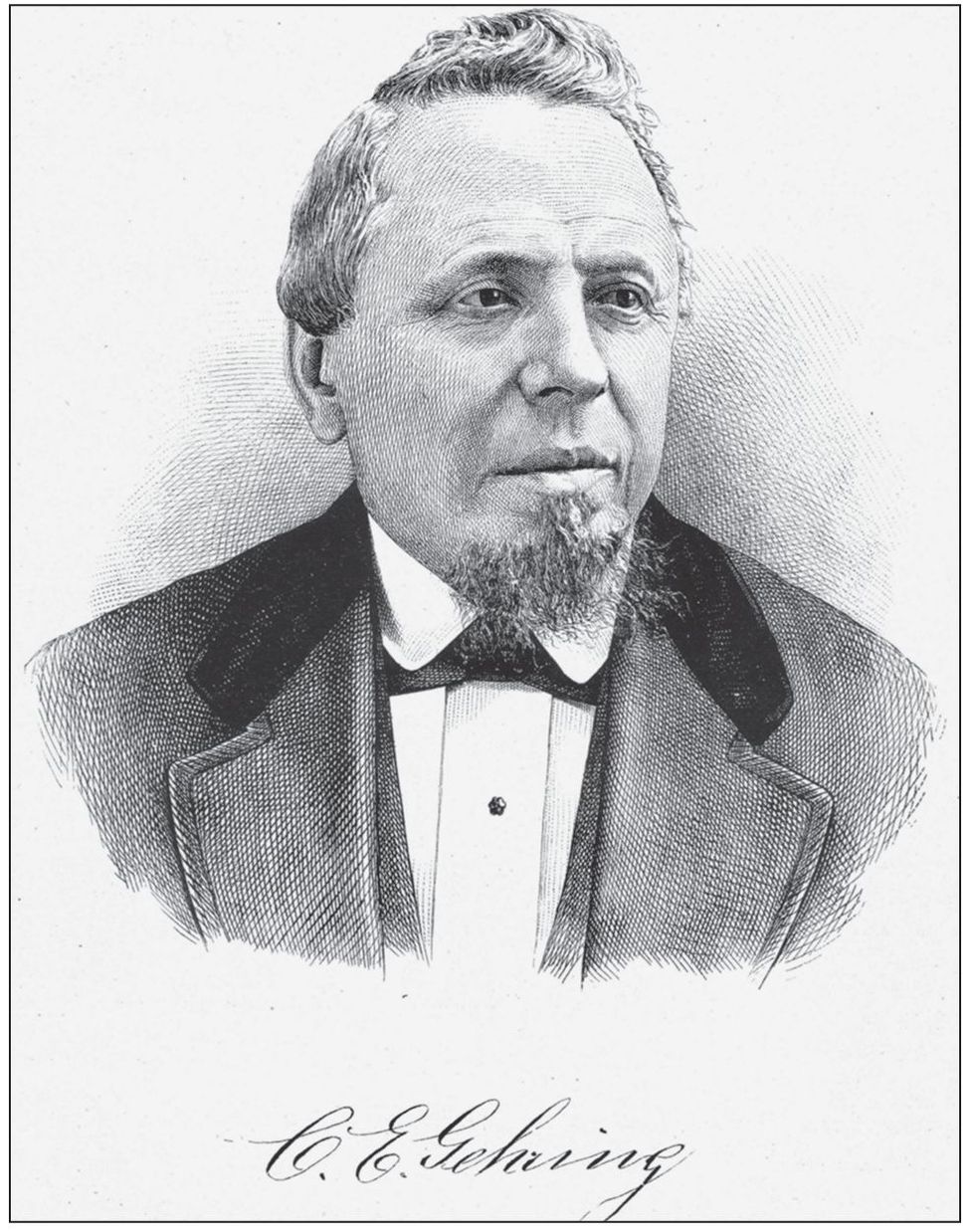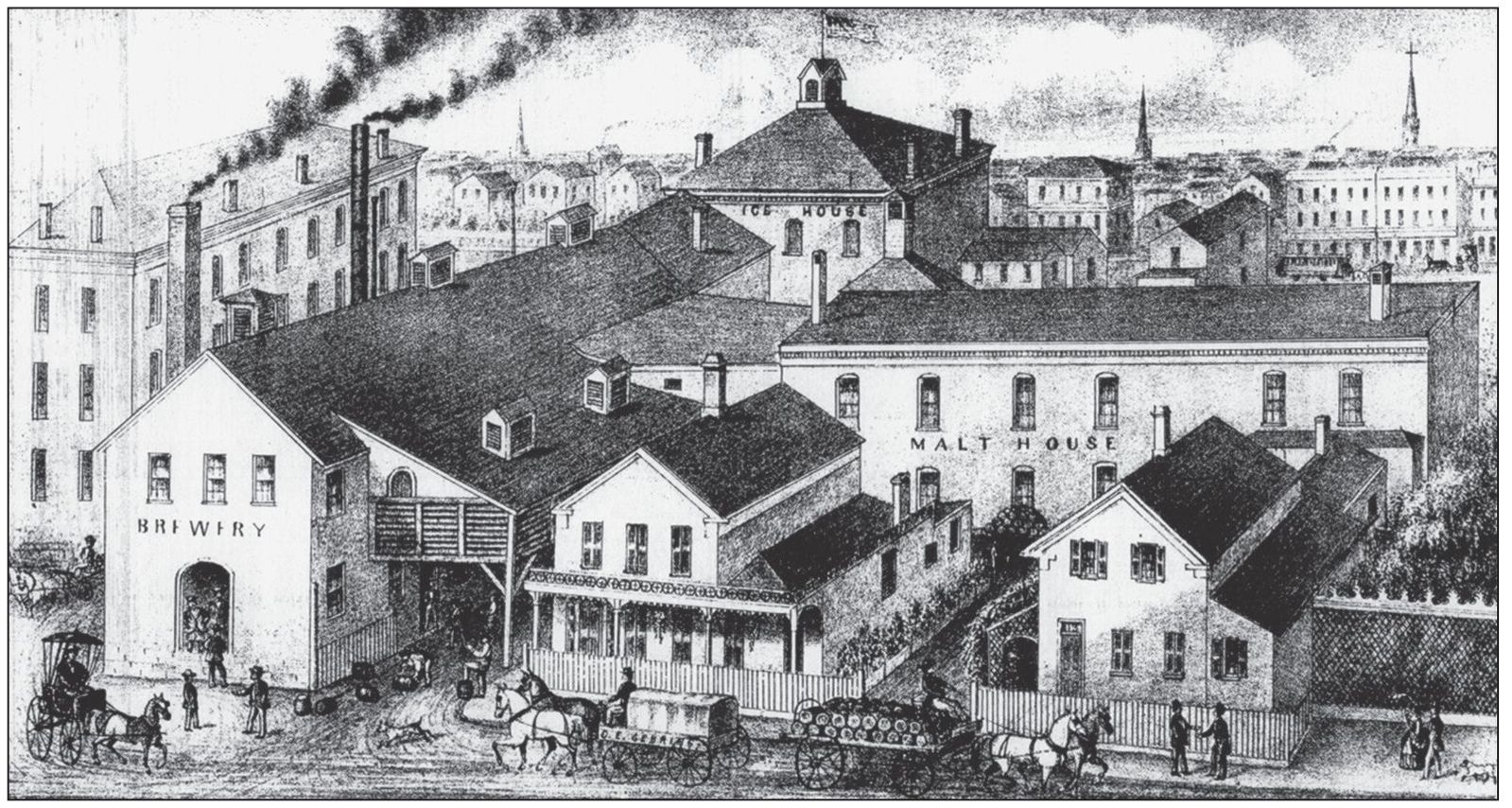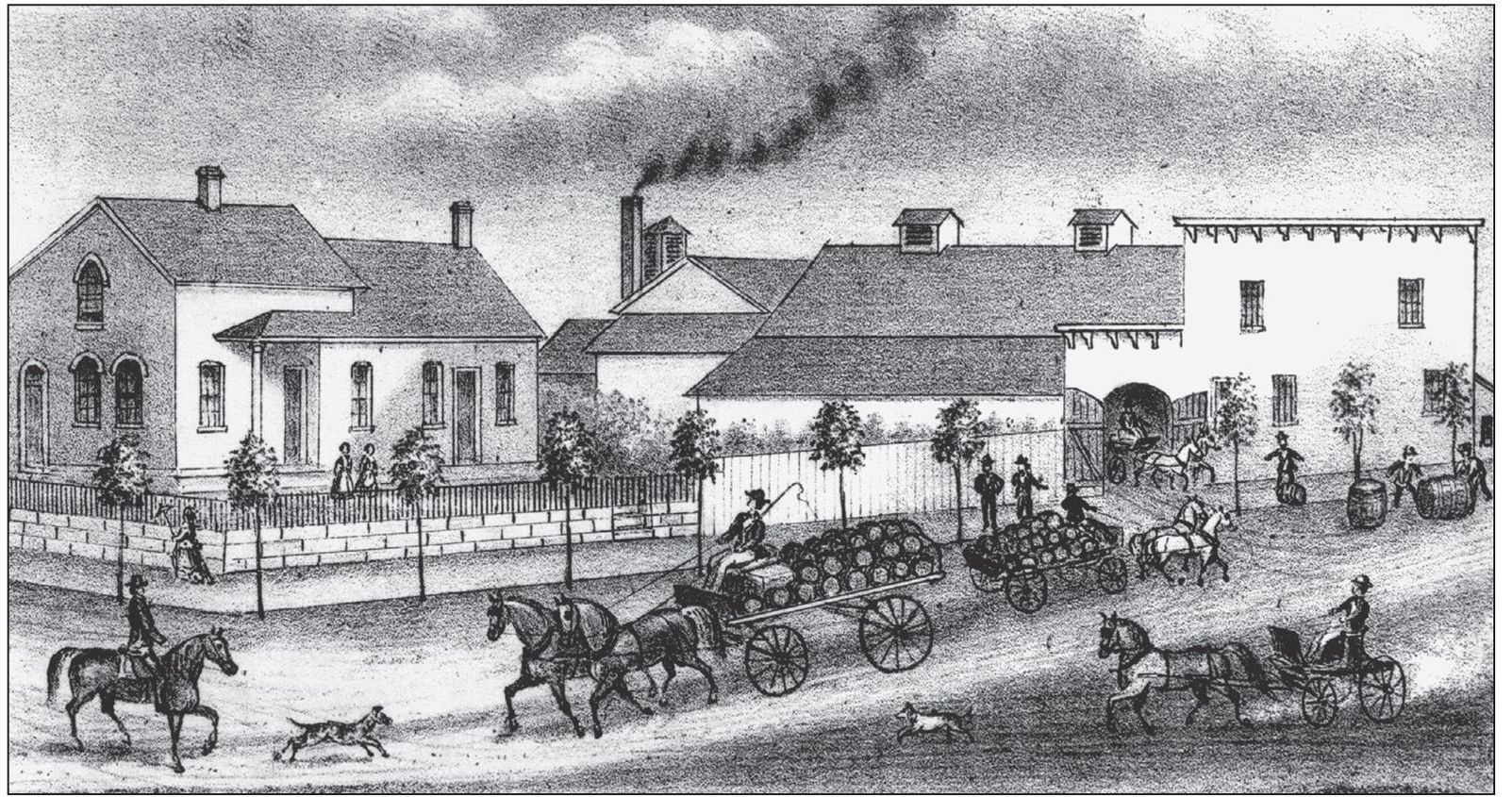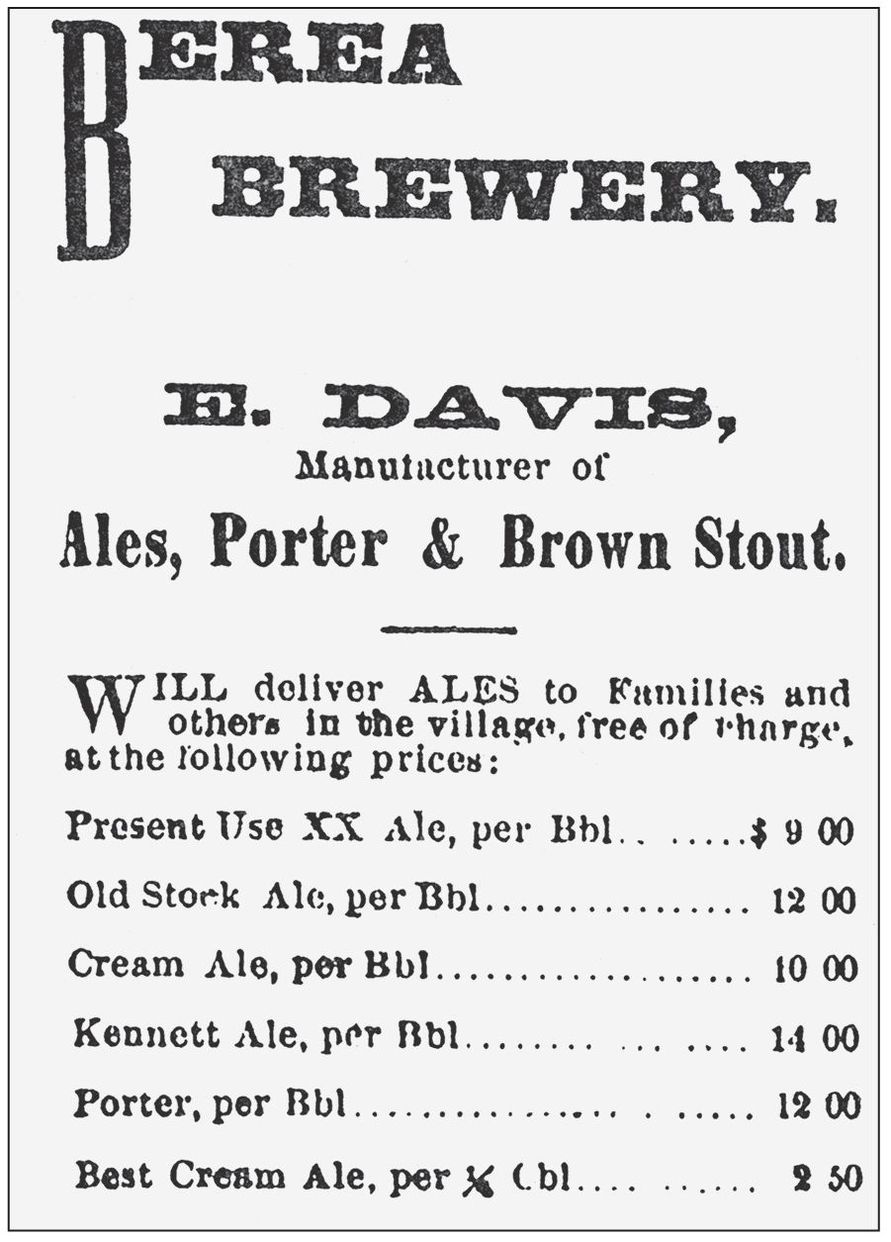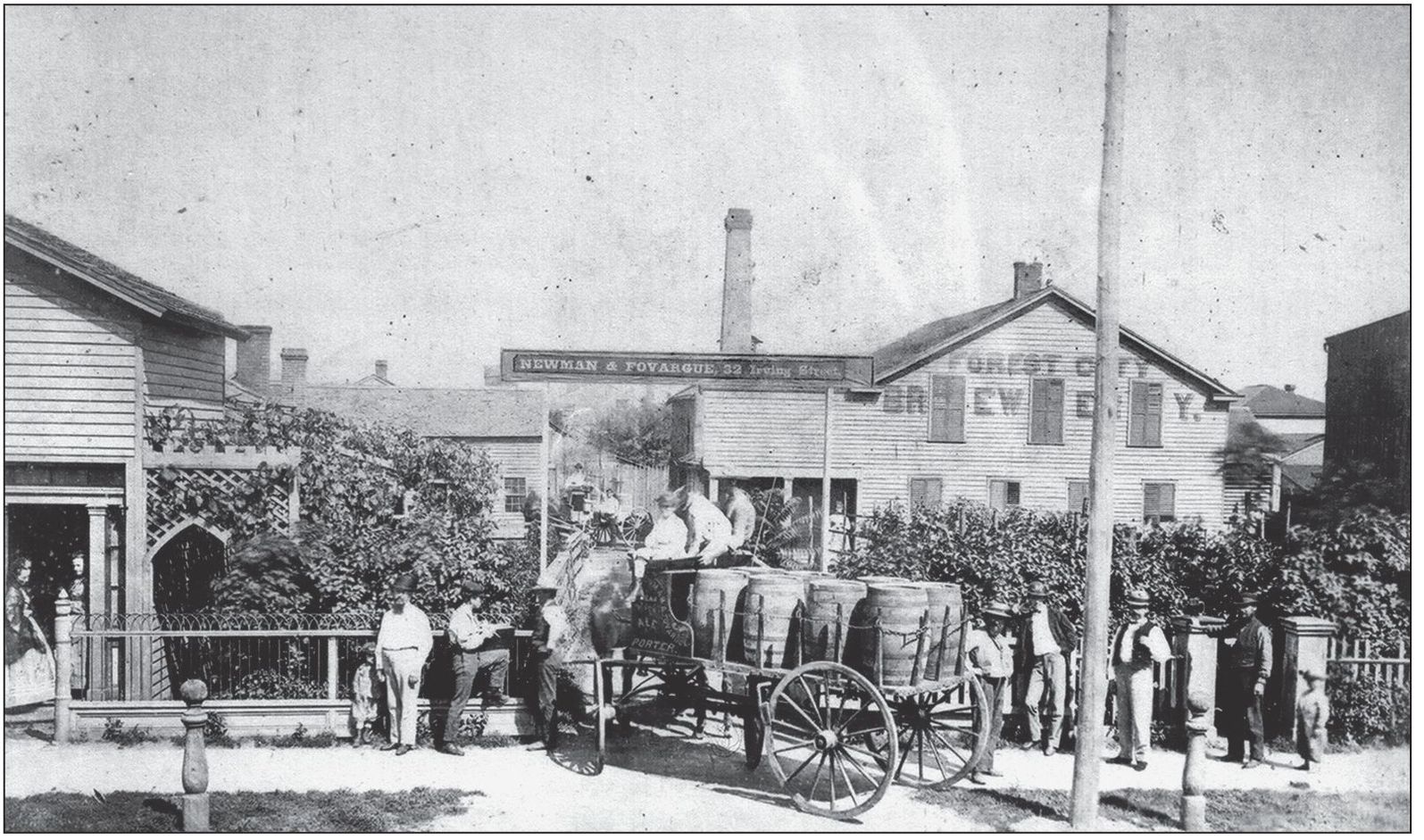One
THE ORIGINS OF A LOCAL INDUSTRY
1830s1890s
The Cleveland Brewery was the citys first such establishment when it opened in 1832. Located in the Flats district, along the Ohio and Erie Canal, the brewery was founded by Robert Bennett and local physician Dr. Samuel J. Weldon. After changing ownership several times, the plant was rebuilt in 1847 and purchased by Samuel C. Ives. The drawing above appeared in the Cleveland Plain Dealer in 1863 and shows a larger addition from 1852, shown on the right side. The plant continued to operate until 1865, when a Confederate sympathizer set the buildings on fire near the end of the Civil War, and the plant burned to the ground.
The Lion Brewery had its origins in 1850 when it was founded by Martin Stumpf, the citys first brewer of lager beer, although he sold the brewery in 1859 to Jacob Mall and Paul Kindsvater. Located atop a steep bluff overlooking Lake Erie, it would remain in operation until 1944. This image is a lithograph from the late 1860s, showing the brewery with sailboats on the lake in the background. (Bob and Jeanette Bendula collection, courtesy of Carl Miller.)
August Burckhardt founded a small lager beer brewery in 1868 along Pearl Street (later West Twenty-fifth Street), on the citys near west side. Producing around 2,500 barrels of beer annually, it was sold in 1876 to Anton Kopp, and after two more changes of ownership, the plant closed its doors in 1880. This drawing appeared in the Cleveland City Atlas of1874.
Carl Ernst Gehring was born in 1830 in Goeppingen, Wurttemberg, Germany. After coming to America at age 18, he worked in several different breweries, including that of John M. Hughes, where he developed a reputation as a respected brewmaster before founding his own plant on the citys near west side in 1857. Although he had brewed ale in his previous jobs, he found much greater success on his own with the brewing of lager beer.
This is Carl Gehrings original brewery, as drawn for the Cleveland City Atlas of 1874 . At the time, it had a 155-barrel brew kettle, which was the largest in the city, allowing it to produce around 12,000 barrels of beer every year. It was located between Pearl (West Twenty-fifth) Street and Brainard Avenue, which today is near the western end of the Lorain-Carnegie Bridge and a block south of the West Side Market. In later years, Brainard was renamed Gehring Avenue.
Henry Hoffman and William Paschen established a small lager beer brewery on the citys southwest side in 1871. Located at the corner of Rhodes and Walton Avenues, the plant occupied a former clock factory. By 1878, the plants annual capacity had reached 8,000 barrels, although actual production appears to have never been more than 3,000 barrels in any given year. Brewing operations ceased soon after Henry Hoffmans death in 1881. This drawing is from the Cleveland City Atlas of 1874.
While the vast majority of the areas 19th-century brewers were in the city of Cleveland, suburban Berea had its own brewery, located on River Street (now Rocky River Drive), opposite Depot Street. Founded by Edward Davis in 1870, the plant was soon producing around 2,000 barrels of ale, porter, and stout each year. It changed owners numerous times over the next 20 years and was known as the North Shore Export Brewing Company when it burned to the ground in January 1897. This early advertisement for Daviss brews appeared in the Grindstone City Advertiser.
The oldest known photograph of a Cleveland brewery, this view from around 1870 was part of an advertisement showing the Forest City Brewery at 3238 Irving (later East Twenty-fifth) Street. Founded in 1850 by Thomas Newman, it was one of three breweries in Cleveland to utilize the citys nickname. By the time of this photograph, the brewery was being operated by Newman and Daniel Fovargue, a recent arrival from Cambridge, England. Although the management of the small plant changed several times over the next decade, it produced around 3,000 barrels of ale and lager beer each year until its closing in 1883.
Leonhard Schlather was a native of Jebenhausen, Wurttemberg, Germany, who had come to America in 1853 and to Cleveland three years later. After working with fellow brewer and German immigrant Carl Gehring in the ale brewery of John M. Hughes, Schlather founded his own plant in 1857 for the production of lager beer, which was a relatively new beverage in the United States. Requiring a longer period of aging than ale, lager rapidly became the most popular type of beer in the country, and those who brewed it were often destined for great success.

